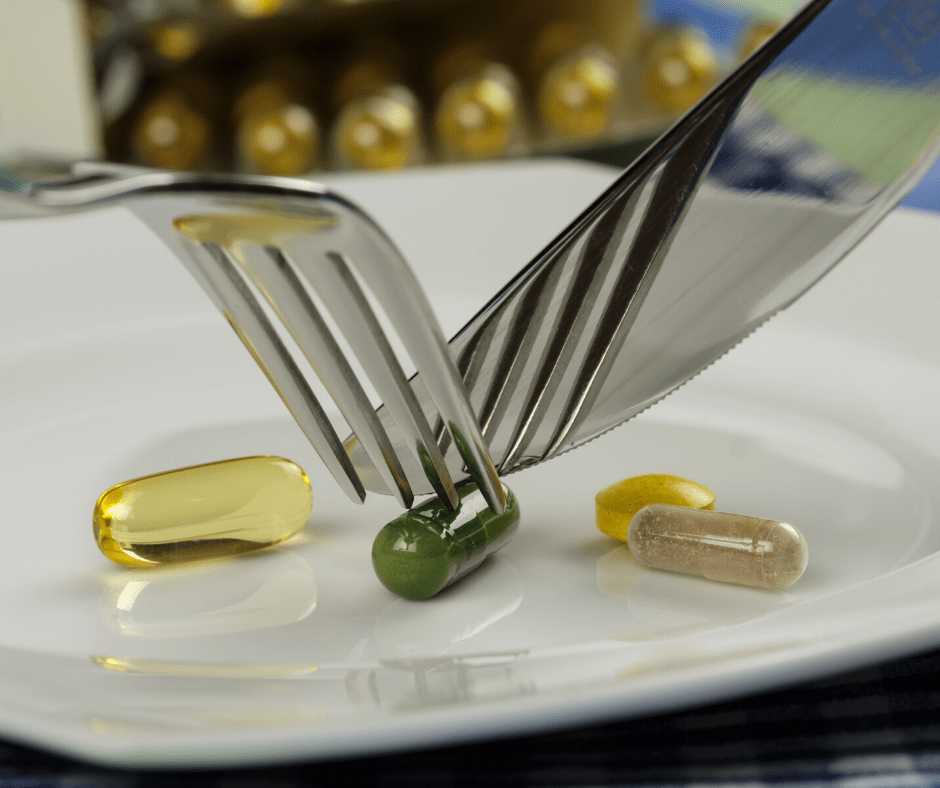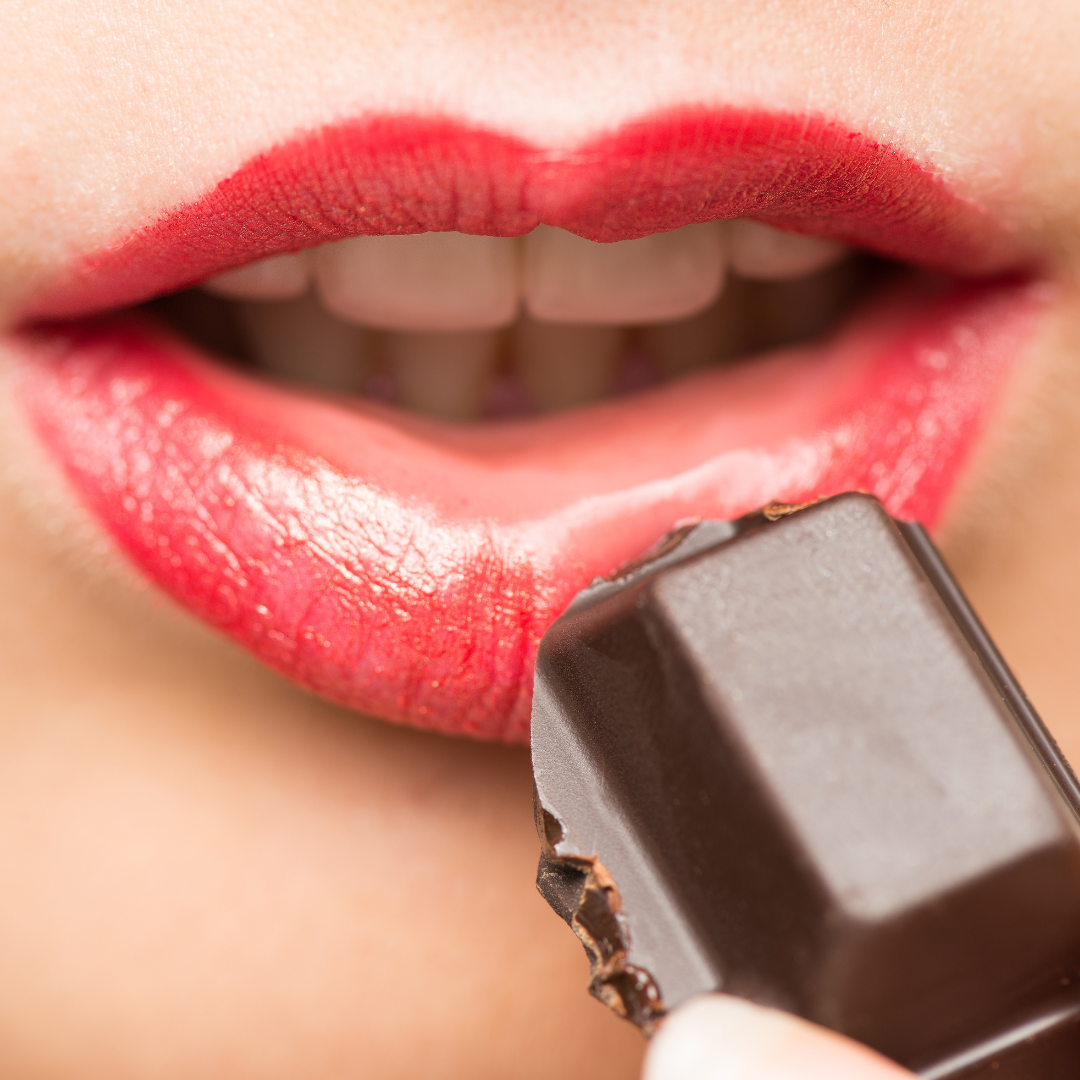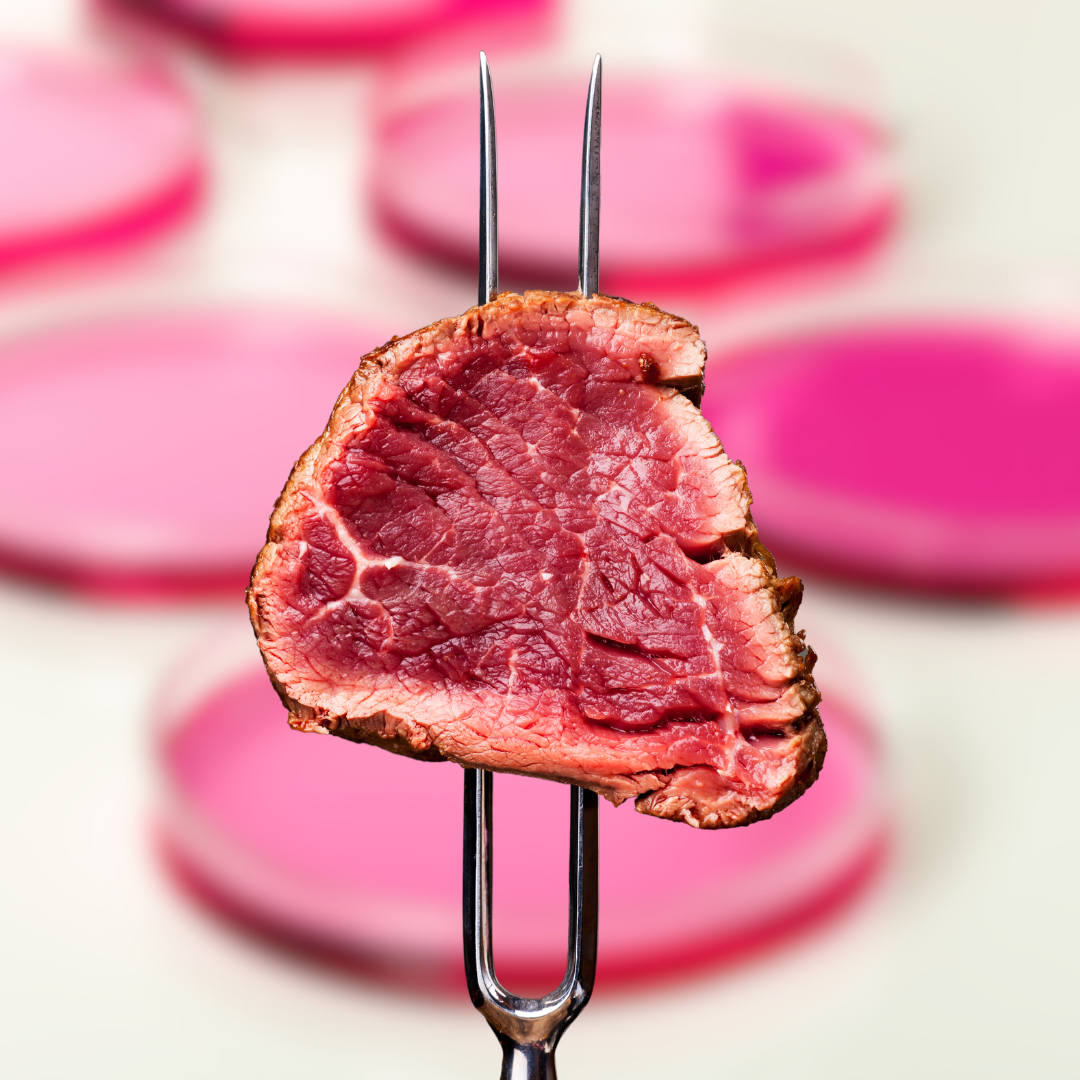Beauty, and health, begins and grows from within. This is something we have always known but it has only been in recent years that both the food and beauty industries have merged to form one larger beauty-from-within industry.
Consumers nowadays are becoming increasingly aware of the relationship between their nutritional food habits and their health. This demand for healthier foods and beverages, in addition to a growing need for convenience and naturality within the industry, has created a need for more functional food products incorporating innate bioactives to provide a balanced diet and address specific health issues.
The result of this demand has caused multiple industries and sectors to merge using innovative ideas which has created incredible synergies between them. I have noticed this strongly between the functional and food for beauty industries, in particular where there are already many natural synergies to be made through supplements, for example.
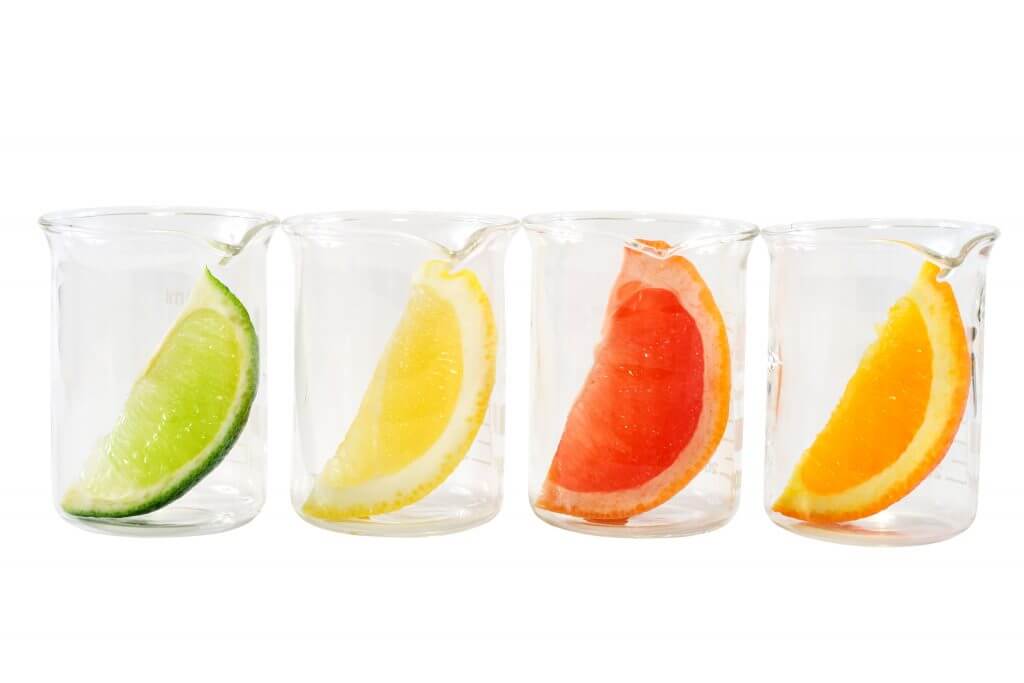 It is no longer uncommon to visit a supermarket or pharmacy, almost anywhere in the world, and see the type of marketing being carried out within this new industry. It seems that nowadays there is an available ingredient to aid almost any consumer ‘pain point’, especially those targeting the anti-aging audience.
For example, melon extract is an active antidote and is said by some to strengthen our skin’s own UV protection and protect it from oxidation stress and inflammation. Cordyceps mushrooms are often promoted as aiding in hair loss, and hibiscus is said to be a strong anti-aging substance with additional antioxidant and anti-inflammatory effects.
Collagen is another major ingredient being used in many of the new-age functional food and beauty-from-within products we can now find on shelf. We know that collagen is an important structural material in the skin and decreases with age so brands are trying to incorporate collagen into foods and supplements as a way to try and slow down or delay the effects of aging.
Most of the aforementioned ingredients and plants are commonly known to most people, however there are many more which are said to offer multiple benefits to our health and nutrition. Examples of some raw materials used in converging industries are botanicals or spices that contain bioactives which have multifunctional properties and are relevant for products within the health, wellness, nutritional, and/or cosmetic industries. Depending on the regulations and associated claims, some ingredients and nutrients can even have a place in all three.
Faria-Silvaa [1] refers to these types of products which fit under the convergent definition as ‘cosmeceuticals’ and defines them as topical products with effects on both skin appearance and functioning.
It is no longer uncommon to visit a supermarket or pharmacy, almost anywhere in the world, and see the type of marketing being carried out within this new industry. It seems that nowadays there is an available ingredient to aid almost any consumer ‘pain point’, especially those targeting the anti-aging audience.
For example, melon extract is an active antidote and is said by some to strengthen our skin’s own UV protection and protect it from oxidation stress and inflammation. Cordyceps mushrooms are often promoted as aiding in hair loss, and hibiscus is said to be a strong anti-aging substance with additional antioxidant and anti-inflammatory effects.
Collagen is another major ingredient being used in many of the new-age functional food and beauty-from-within products we can now find on shelf. We know that collagen is an important structural material in the skin and decreases with age so brands are trying to incorporate collagen into foods and supplements as a way to try and slow down or delay the effects of aging.
Most of the aforementioned ingredients and plants are commonly known to most people, however there are many more which are said to offer multiple benefits to our health and nutrition. Examples of some raw materials used in converging industries are botanicals or spices that contain bioactives which have multifunctional properties and are relevant for products within the health, wellness, nutritional, and/or cosmetic industries. Depending on the regulations and associated claims, some ingredients and nutrients can even have a place in all three.
Faria-Silvaa [1] refers to these types of products which fit under the convergent definition as ‘cosmeceuticals’ and defines them as topical products with effects on both skin appearance and functioning.
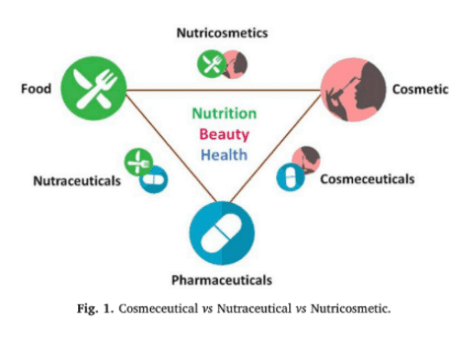
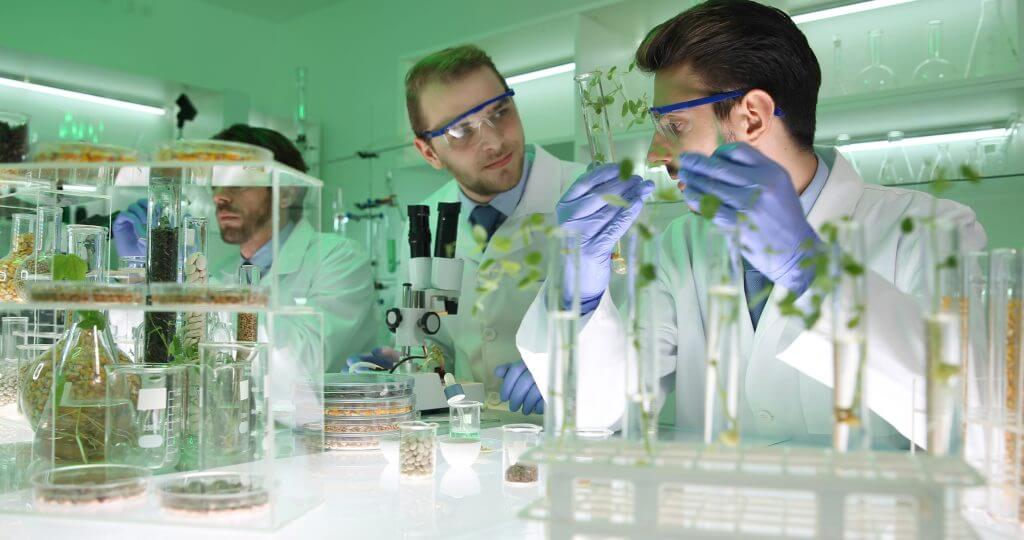
Converging Industries
When areas between the food and beverage sectors, and other industries such as cosmetics, medicinal and healthcare overlap, they are known as converging industries. Some functional ingredients and nutrients can be present in all three industries which allows for new and interesting products to be created in different formats. It is no longer uncommon to visit a supermarket or pharmacy, almost anywhere in the world, and see the type of marketing being carried out within this new industry. It seems that nowadays there is an available ingredient to aid almost any consumer ‘pain point’, especially those targeting the anti-aging audience.
For example, melon extract is an active antidote and is said by some to strengthen our skin’s own UV protection and protect it from oxidation stress and inflammation. Cordyceps mushrooms are often promoted as aiding in hair loss, and hibiscus is said to be a strong anti-aging substance with additional antioxidant and anti-inflammatory effects.
Collagen is another major ingredient being used in many of the new-age functional food and beauty-from-within products we can now find on shelf. We know that collagen is an important structural material in the skin and decreases with age so brands are trying to incorporate collagen into foods and supplements as a way to try and slow down or delay the effects of aging.
Most of the aforementioned ingredients and plants are commonly known to most people, however there are many more which are said to offer multiple benefits to our health and nutrition. Examples of some raw materials used in converging industries are botanicals or spices that contain bioactives which have multifunctional properties and are relevant for products within the health, wellness, nutritional, and/or cosmetic industries. Depending on the regulations and associated claims, some ingredients and nutrients can even have a place in all three.
Faria-Silvaa [1] refers to these types of products which fit under the convergent definition as ‘cosmeceuticals’ and defines them as topical products with effects on both skin appearance and functioning.
It is no longer uncommon to visit a supermarket or pharmacy, almost anywhere in the world, and see the type of marketing being carried out within this new industry. It seems that nowadays there is an available ingredient to aid almost any consumer ‘pain point’, especially those targeting the anti-aging audience.
For example, melon extract is an active antidote and is said by some to strengthen our skin’s own UV protection and protect it from oxidation stress and inflammation. Cordyceps mushrooms are often promoted as aiding in hair loss, and hibiscus is said to be a strong anti-aging substance with additional antioxidant and anti-inflammatory effects.
Collagen is another major ingredient being used in many of the new-age functional food and beauty-from-within products we can now find on shelf. We know that collagen is an important structural material in the skin and decreases with age so brands are trying to incorporate collagen into foods and supplements as a way to try and slow down or delay the effects of aging.
Most of the aforementioned ingredients and plants are commonly known to most people, however there are many more which are said to offer multiple benefits to our health and nutrition. Examples of some raw materials used in converging industries are botanicals or spices that contain bioactives which have multifunctional properties and are relevant for products within the health, wellness, nutritional, and/or cosmetic industries. Depending on the regulations and associated claims, some ingredients and nutrients can even have a place in all three.
Faria-Silvaa [1] refers to these types of products which fit under the convergent definition as ‘cosmeceuticals’ and defines them as topical products with effects on both skin appearance and functioning.
Nutricosmetics, Cosmeceuticals and Nutraceuticals
The blurring of personal healthcare, nutrition and beauty-from-within is creating new FMCG categories. ‘Nutricosmetics’, ‘Cosmeceuticals’ and ‘Nutraceuticals’ are also terms which have made an appearance in the industry over the past few years. They are defined (in order) as, “the consumption of food or oral supplements to produce an appearance benefit”, “cosmetic products containing bioactive ingredients which appear to have medical benefits”, and “any food or part of a food that provides medical or health benefits”. The growing popularity of these products means the market becomes more fragmented, revealing new commercial opportunities for savvy entrepreneurs and agile organisations to seed, grow and harvest.
Credit: Faria-Silvaa [1]
For many consumers, healthy foods are defined as products that contain fewer processed ingredients and are free from negatively perceived food additives. The same is becoming true of the cosmetics industry with more of a push for cleaner and safer products from big and small brands. Such formulations in food products, however, are generally physically and chemically less stable. This, therefore, has to be taken into account when thinking and working your way through the NPD process of such products. Converging industry companies are also being exposed to a brand new set of customers, suppliers, partners, and competitors. It has opened up a new segment of the market that they likely have not been previously able to attract but they must learn to adapt to the new behaviours, preferences and expectations. The key to success lies in the positioning as well as the clearly communicated benefits carried out through market research and consumer insights – something which iNewtrition can help you with if you send an email to [email protected].What role does innovation play?
If you have read anything I have written before, you will know that I am a huge proponent of innovation in the food industry and beyond. I see food for beauty as a key area for innovation to thrive. There is an opportunity to develop products and services which meet the requirements of both industries and will create better results for consumers. Food companies have a chance to work alongside beauty companies and create new products to satisfy the ever-increasing consumer trend to become healthier and fitter.



